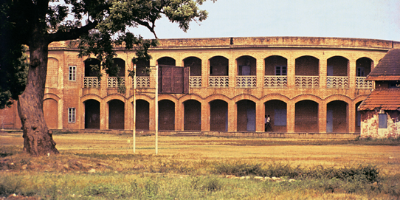Education: Class or Mass Downward filteration Theory (17 Nov 1835 Jahr – 10 Jan 1857 Jahr)
Beschreibung:
Initial motive of East India Company (EIC) was purely political. As soon as EIC became a political power, it had to employ large numbers of Indian servants partly because the exclusion of Indians from all posts under Government would have led to great discontent and partly because the exclusive employment of Englishmen was neither practicable nor financially feasibleDogma of the period was government should educate only those classes of society that had lost most by the change of Government.
such education, followed by employment in subordinate services of Government, would win the loyalty of these classes and help the consolidation of British Rule in India.
This motive that led to the education of the Muslims in Bengal, the Hindus m North-Western Province, and the Brahmins in Bombay.
This was soon abandoned because the Political situation that gave rise to it disappeared generally within a few years of the British conquest of the area concerned
Three forms of Downward filtration theory:
1: Company desired, on the analogy of the aristocratic classes in England, to educate only the upper classes of society with a view to creating a governing class in India, consisting of Sardars, Nawabs, Rajas and such other aristocratic classes.
2: the upper or influential classes of society were proposed to be educated first because, it was argued, their culture would later on naturally descend to the lower classes.
This view may have some validity in a society which permits plenty of mobility for its different strata. The Indian society, however, was divided into watertight sections owing to the prevalence of a number of religions and castes with the result that the assumption of a Downward Filtration Theory of this type had hardly any validity.
3: Company was expected to give a good education (which then necessarily meant education through English) to only a few persons (these may or may not be from the upper classes) and leave it to these persons to educate the masses (through the modern Indian languages).
Inevitability of DFT and aftermath
Low funding for education (only 1% of Revenue) – millions of people were supposed to be educated
educating millions of individuals in a multitude of language with which they were but little familiar; they had few suitable men and the poorest of means;
Cause of Failures: (a) almost every person educated in English schools got employment under Government; and hence there was hardly any occasion for him to go and teach his own countrymen. (b) every person who was taught in English schools was cutoff from his own people in sympathy and ideology.
References: Nurullah and Naik, “A Student history of education in India”,
Zugefügt zum Band der Zeit:
Datum:
17 Nov 1835 Jahr
10 Jan 1857 Jahr
~ 21 years
